
Hello everyone. In this post I’ll be taking you along with me to the enchanting medieval town of Rottenburg ob der Tauber. The name "Rottenburg" comes from the Red Castle (Roten Burg) built here in the 10th century. However, the town’s origins date back even further, to the 9th century. The phrase "ob der Tauber" means "above the Tauber River", but not directly on its banks. And interestingly the word "Tauber" itself means "water" in Celtic. Strange, but true.

This town is generally considered the starting point of the Romantic Road (Romantische Straße), which is actually not a historical route at all. It was created in the 1950s by Bavarian cities as a tourist attraction to draw visitors to the region. And it definitely worked.

The nickname "Christmas Town" isn’t just marketing either. There’s really a Christmas spirit here. So sit back and relax. I’ll now take you through the town.

I’d like to start with St. James Church (St. Jakobskirche) because it brought the town great fame during the Middle Ages. Pilgrims traveling the Camino de Santiago (Way of St. James) would stop here on their way to Santiago de Compostela. The symbol of these pilgrims was the scallop shell, a symbol I’ve seen many times before: in Mont Saint-Michel, France, along routes in Spain and also in some Portuguese pilgrimage paths.

A section of the Camino passed through here in Germany. Why was this church so important? Because it once housed three drops of Jesus’ blood, preserved inside a special casket made of rock crystal. This casket was placed inside a cross built in 1270, which was later embedded into an altar constructed in 1504.


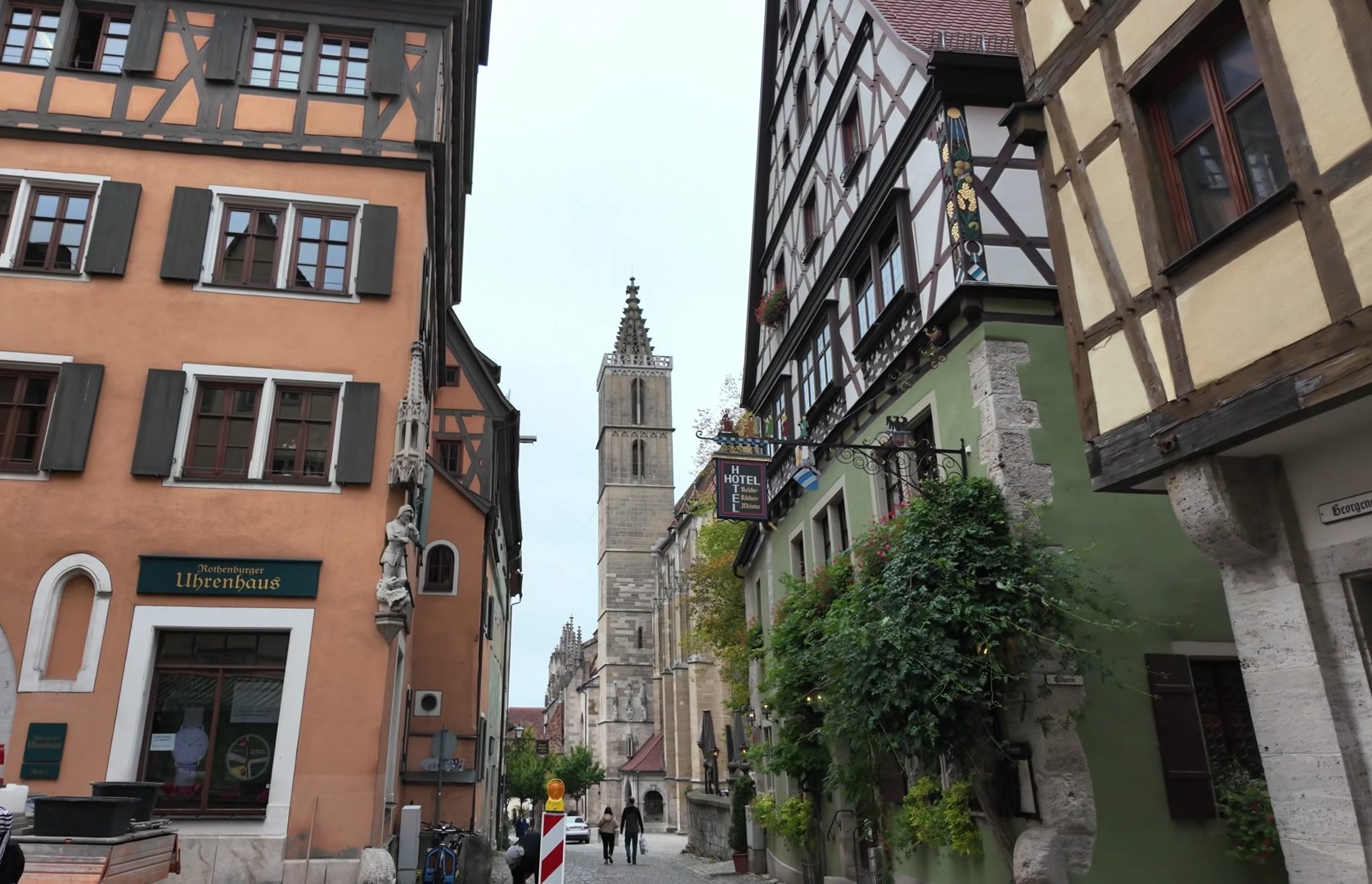


The church has a rather simple structure, typical of many German churches. But its woodwork is absolutely stunning. On the altar you can see a depiction of the Last Supper. To the left and right are scenes from the life of Christ: on the left, Jesus entering Jerusalem; on the right, Jesus praying in the Garden of Gethsemane.

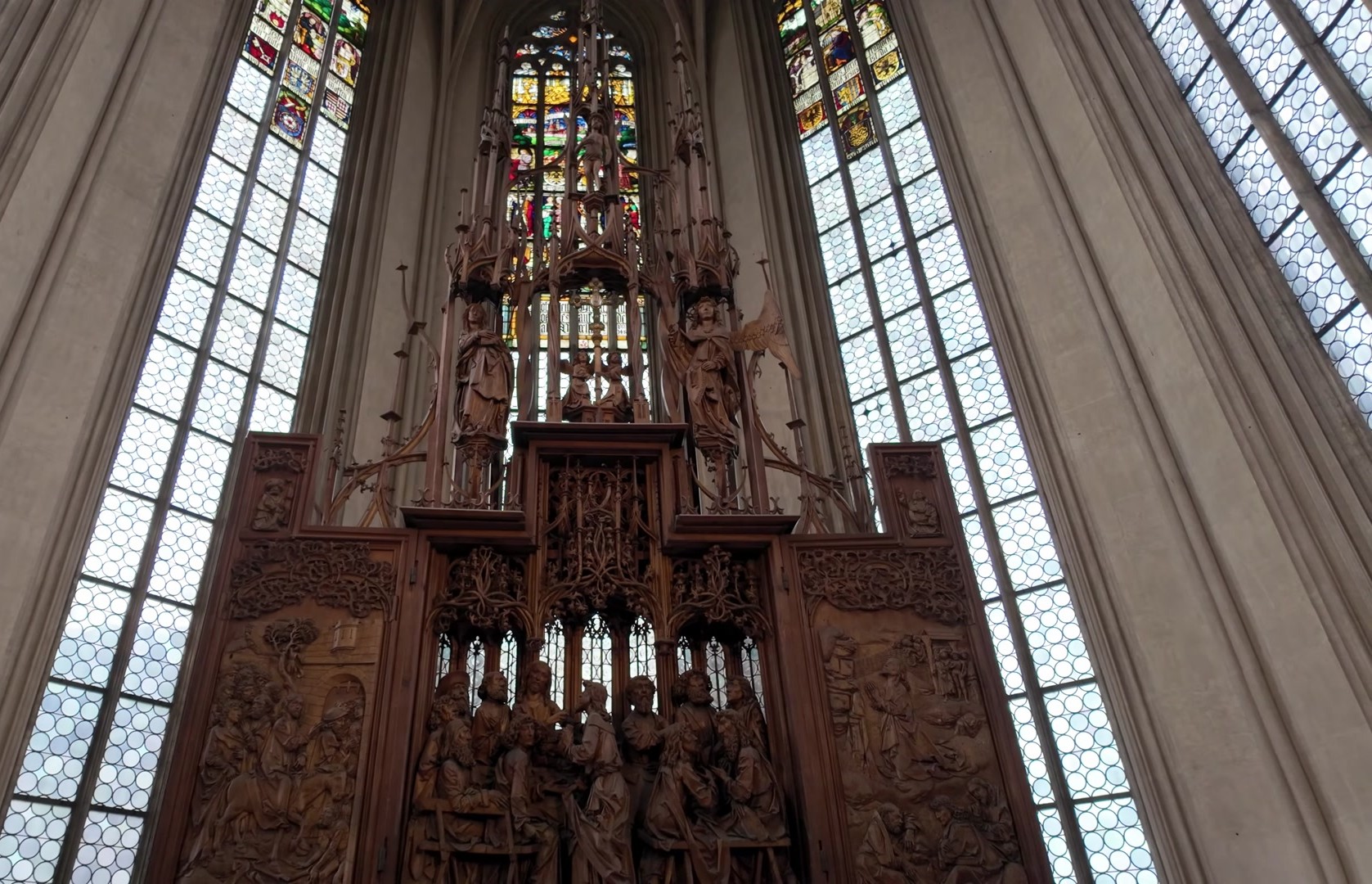

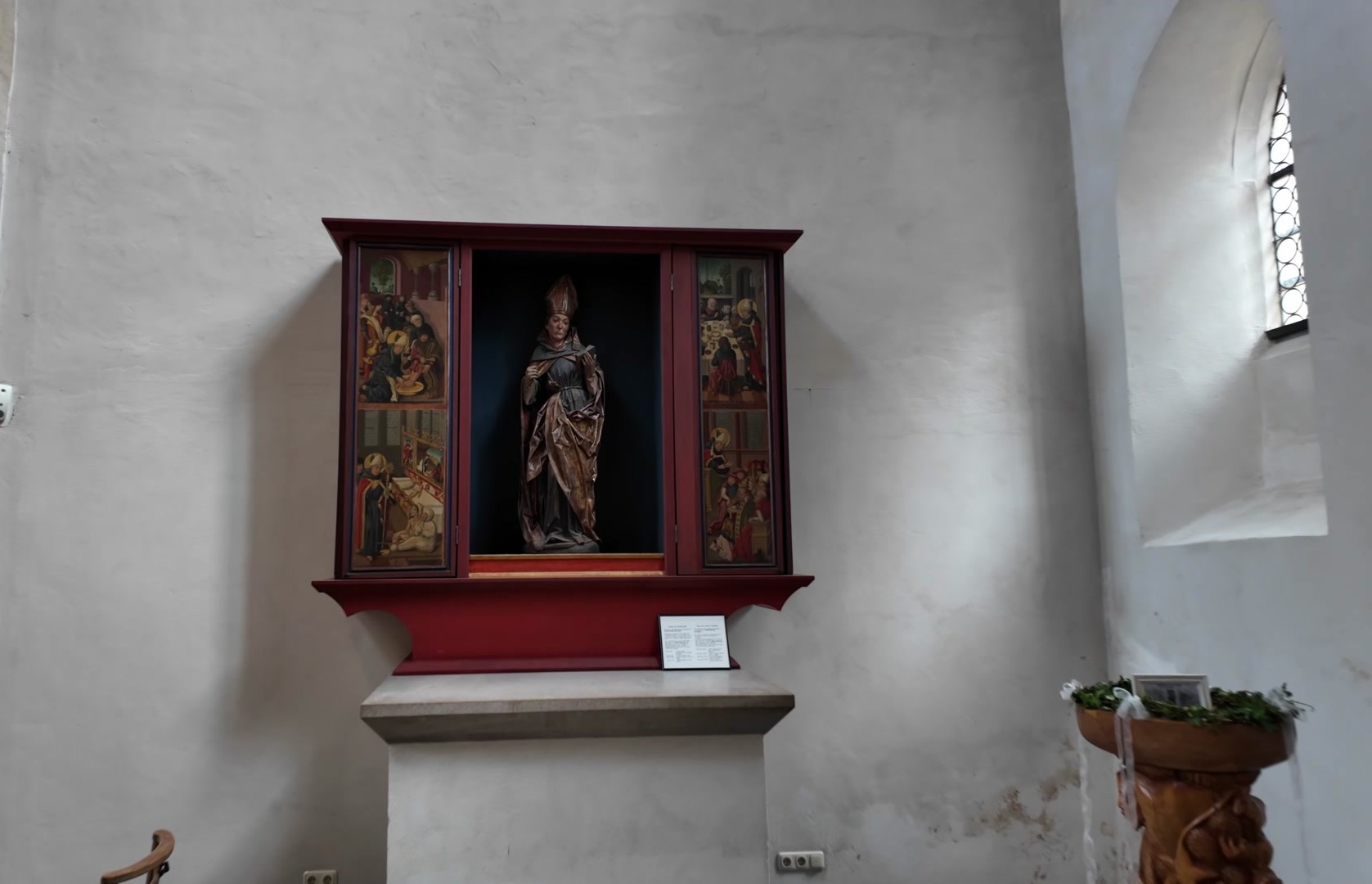

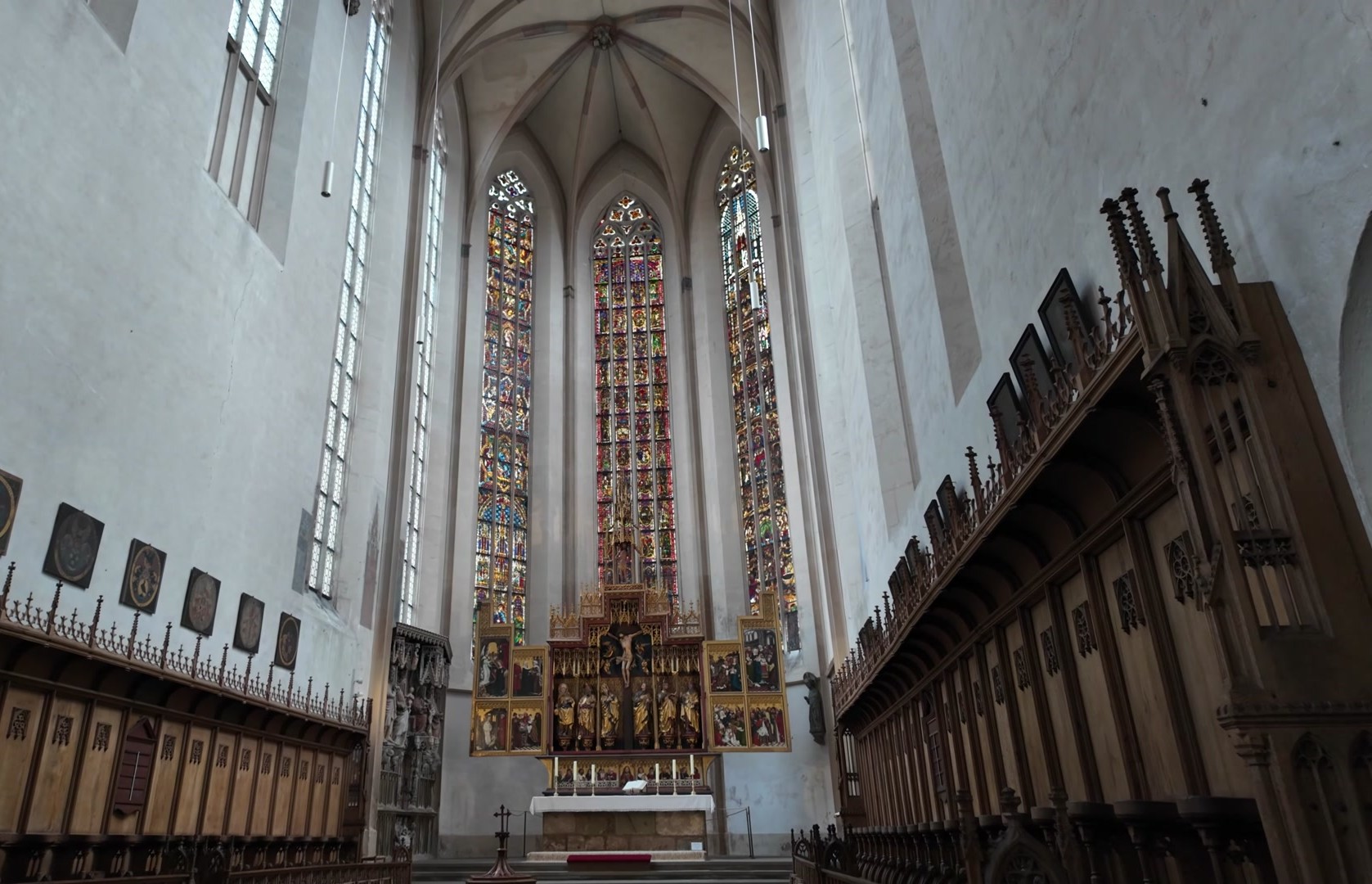
There’s also a high altar and beautiful stained glass windows. While I’ve seen more impressive stained glass in Spain, the craftsmanship of the woodcarvings here is exceptional. One particularly striking modern wooden sculpture depicts a Christmas boat featuring the Virgin Mary, Joseph, baby Jesus and an angel. Interestingly this sculpture was crafted in Tanzania and the figures represent different ethnicitie, an intriguing detail.
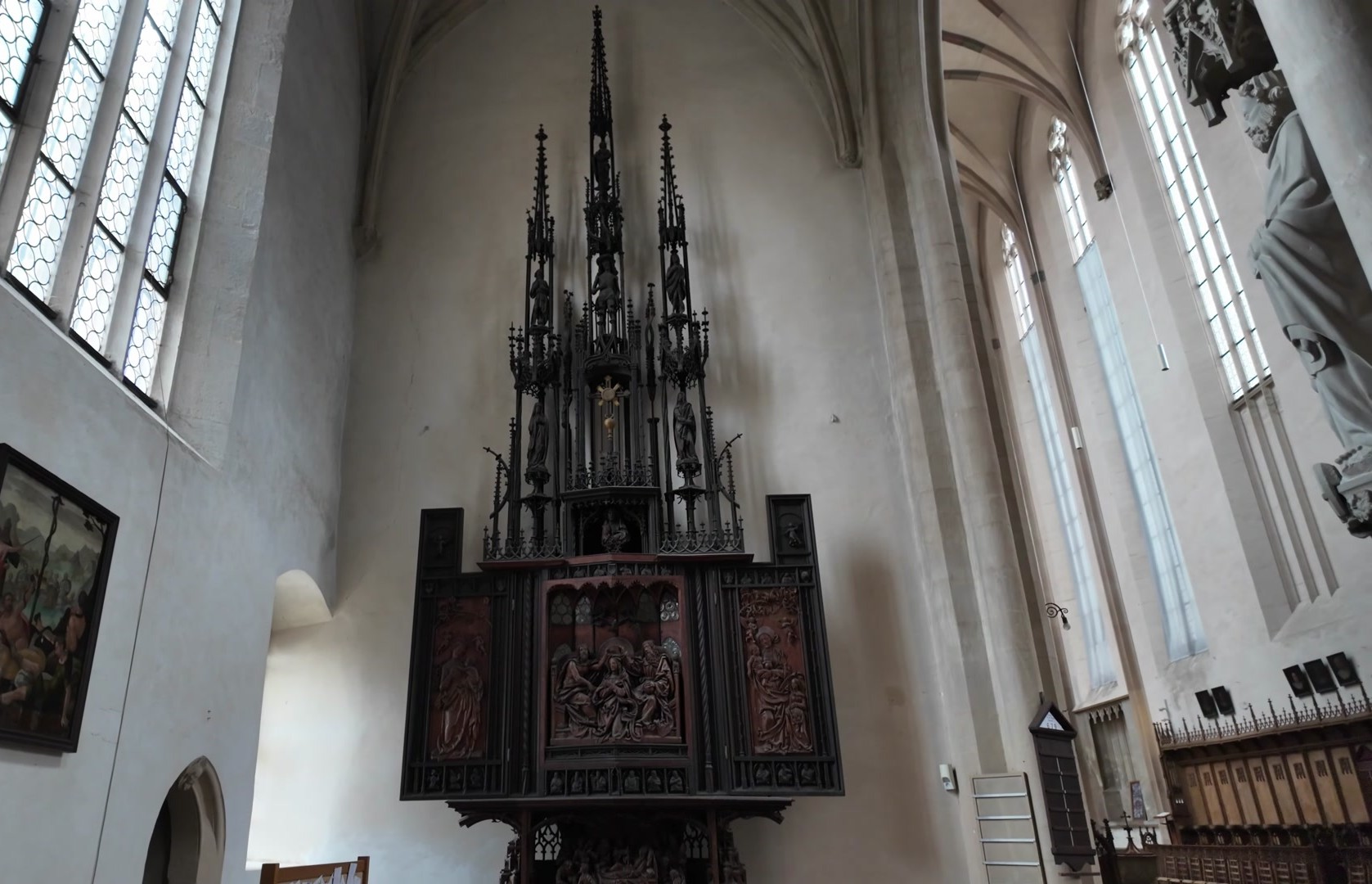
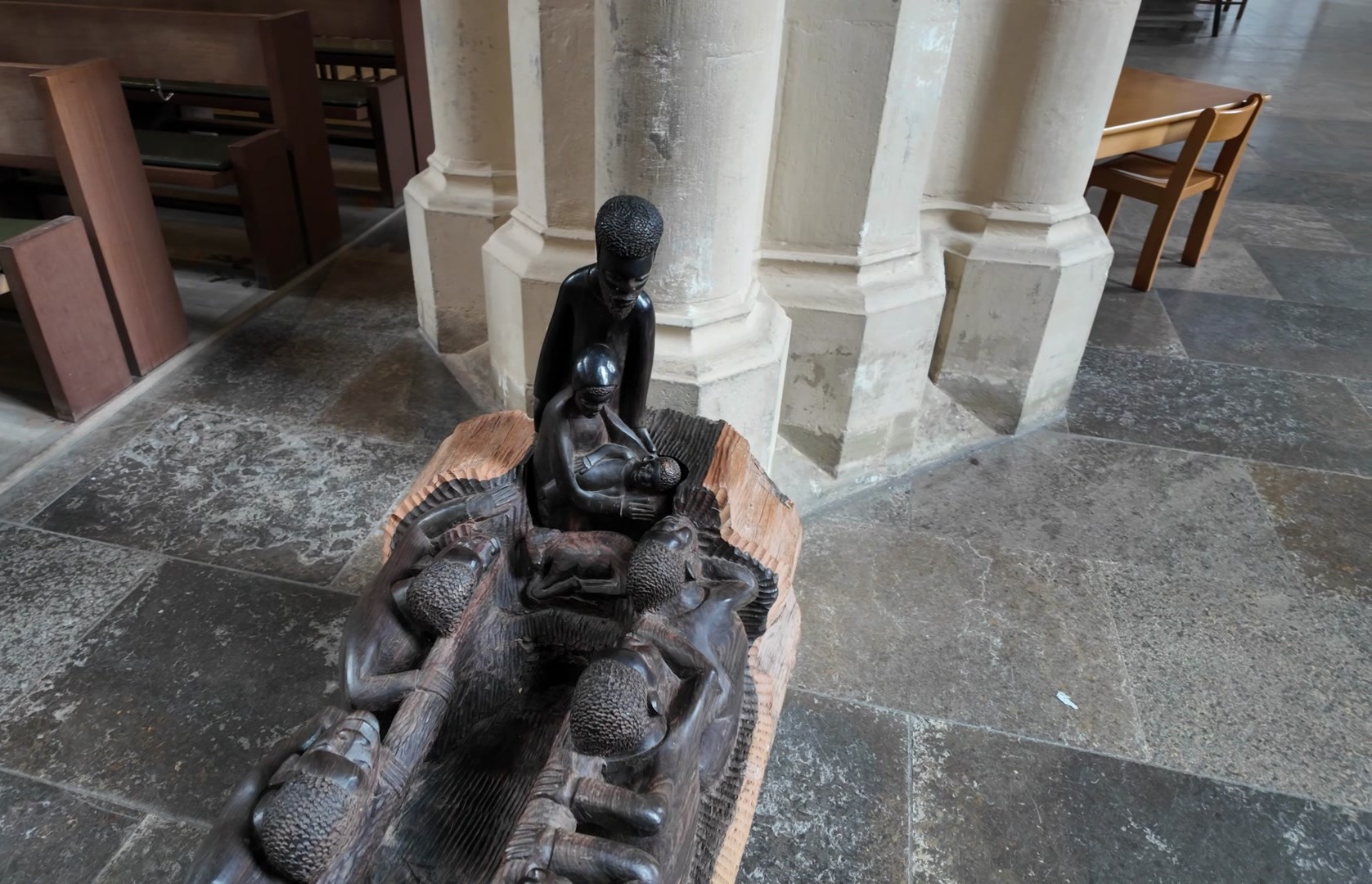
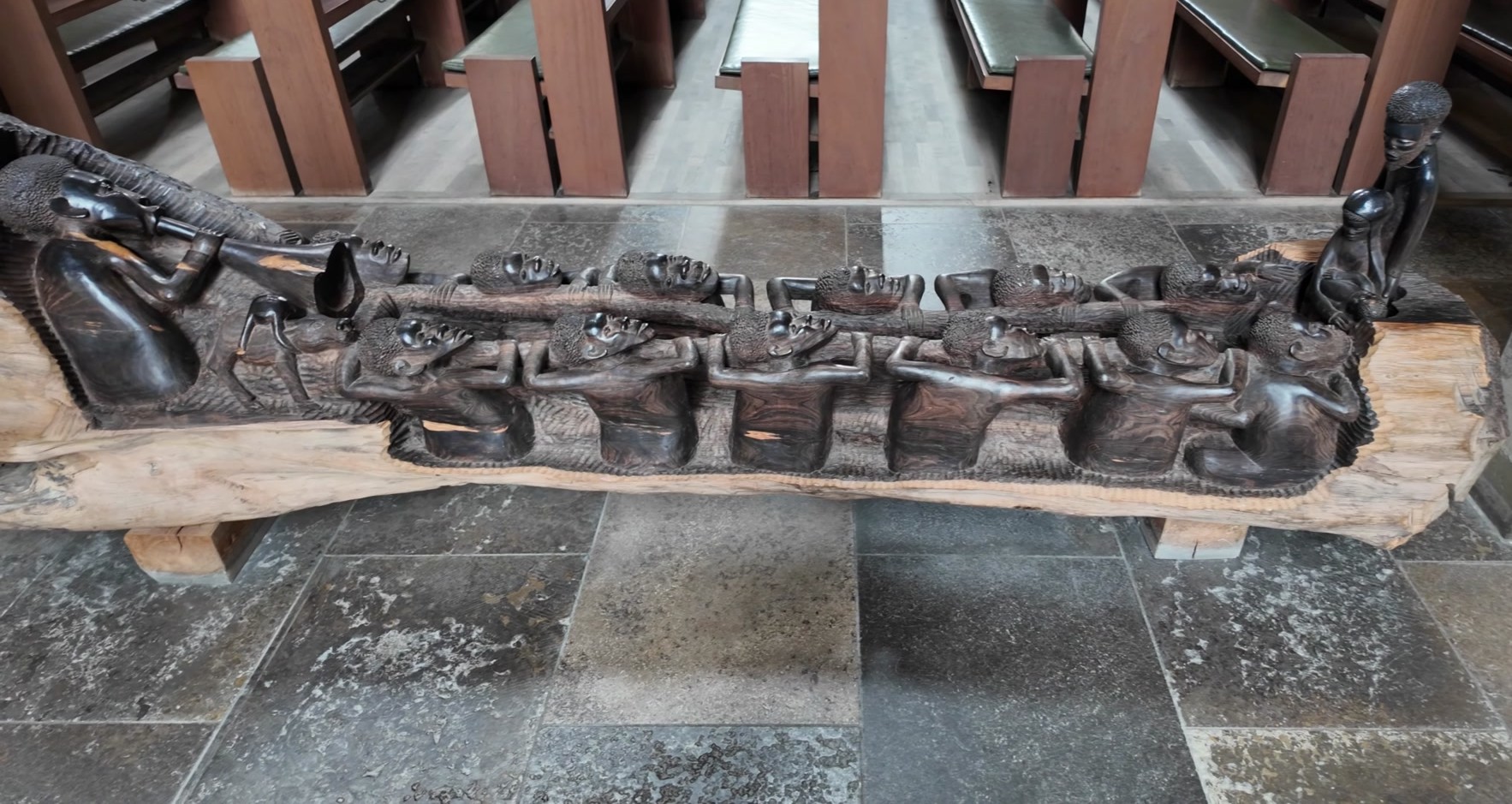
Unfortunately, in the 15th century, Catholics arrived and banned Protestant ceremonies, leading to tragic periods in the town's history.

Now let’s move to the castle gardens. Located on a high vantage point, they offer panoramic views of the entire town. The most noticeable feature in the view is the old castle walls, remarkably well-preserved since their construction. There’s also a two-tiered defensive system: we’re currently standing on the outer wall, while the inner wall includes towers and gates that you might spot while walking through the streets.
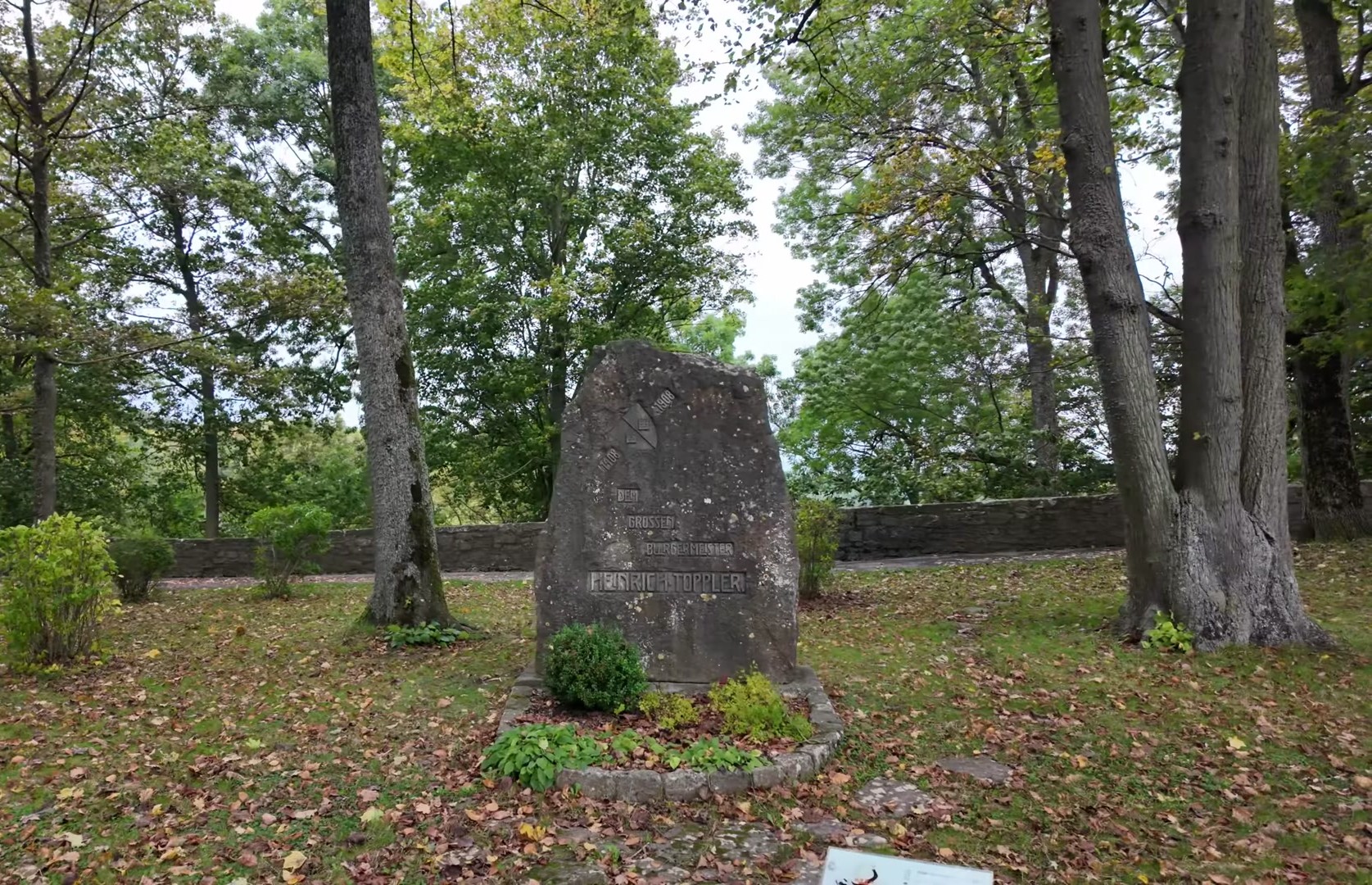
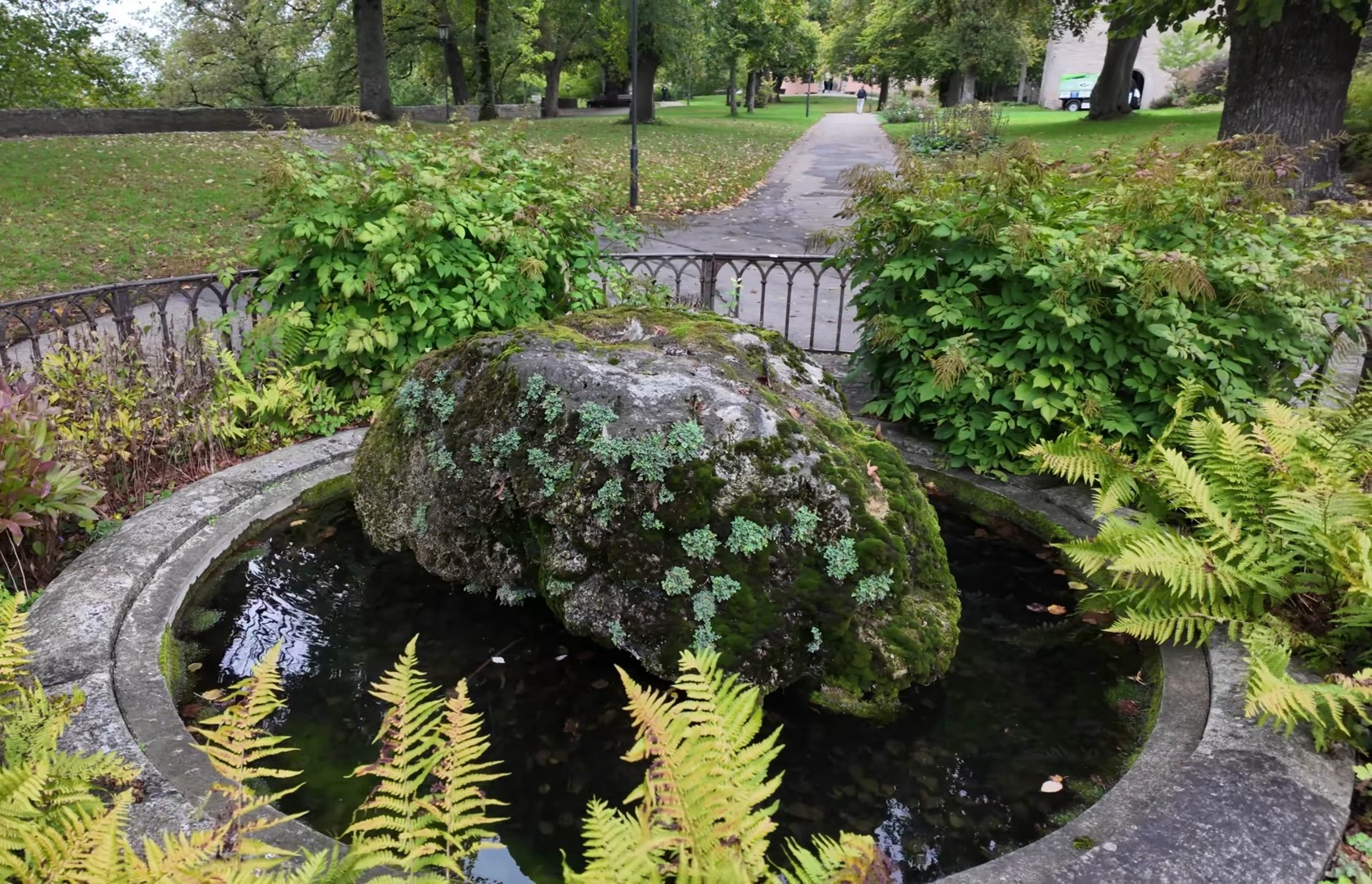
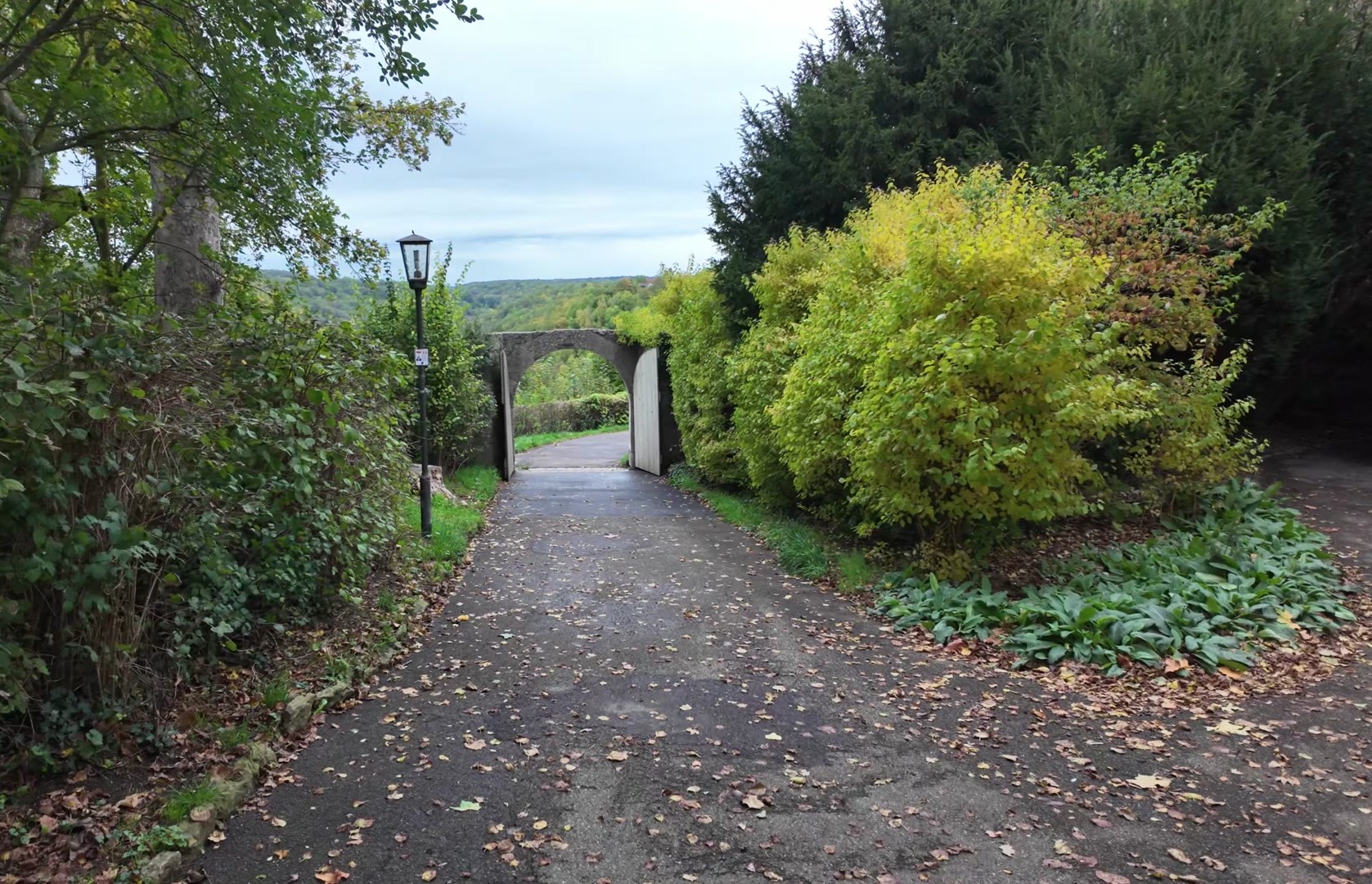
The town is known as the Twice-Blessed City for two major events in its history.
The first occurred during the Thirty Years War, often considered Europe’s first large-scale pan-European conflict. Feldmarschall Tilly came to destroy the city because it held Protestant beliefs. The townspeople pleaded with him and the mayor impressed him by drinking 3.5 liters of Franconian wine in one go, an event remembered as the Master Swallow. Thus, the city was spared.

One of the war’s main causes was religious conflict: Protestants wanted to worship freely, but Catholics opposed them. Eventually the Peace of Westphalia was signed, separating state and religion and allowing each state autonomy over internal affairs.
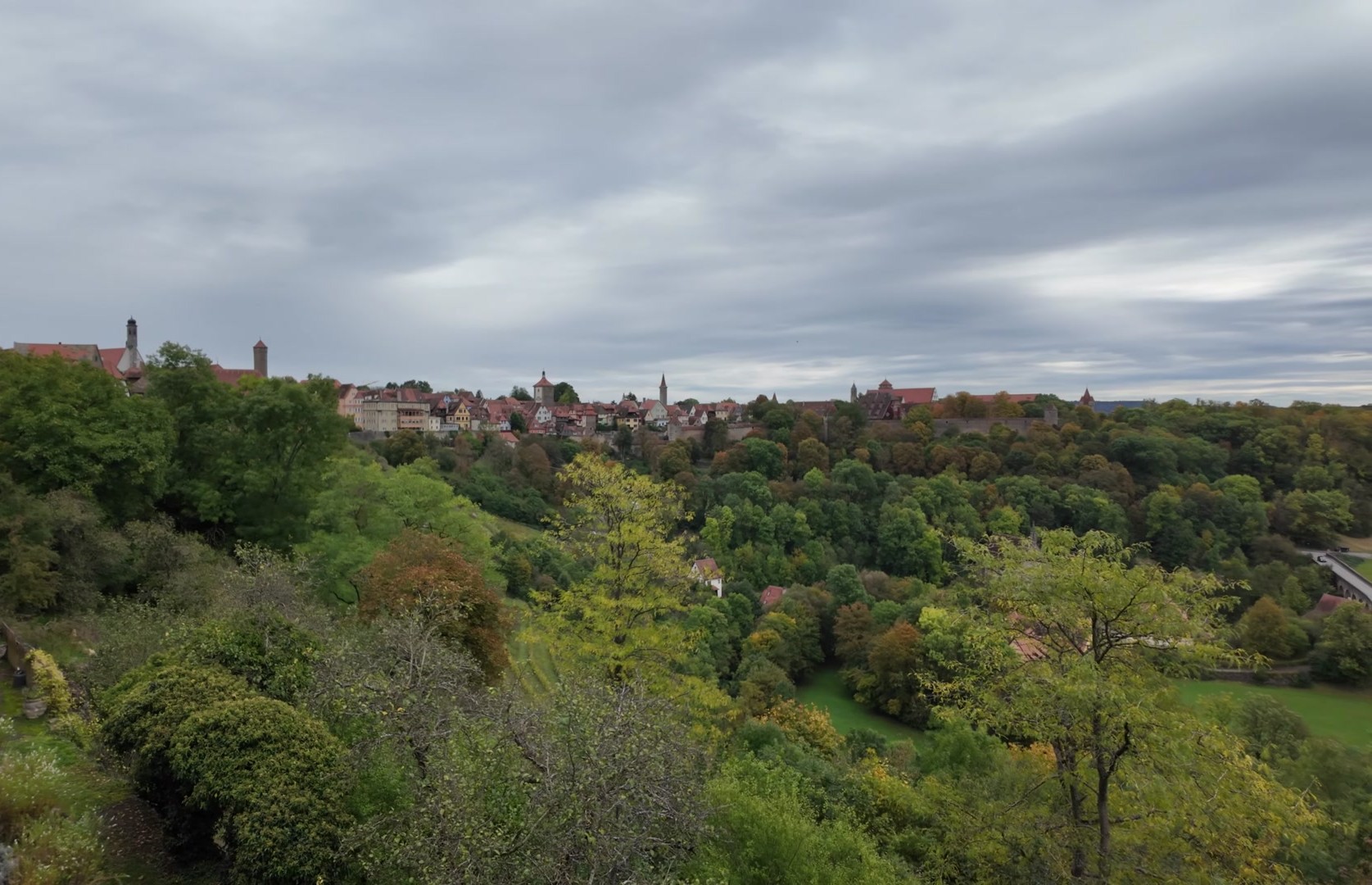


Still the war caused between 40,000 and 75,000 deaths in Germany alone, worsened by the plague. Rottenburg’s development stagnated until nearly the 20th century. It survived only through loans and lived in poverty until its second stroke of luck.




And what was that second chance? During World War II, a United Nations air unit aimed to bomb a nearby oil depot but missed due to fog and bombed the town instead. Fortunately, they hit the western part, not the historic center. The ancient walls and double defense system remained intact. Some say this mercy came because the bombing commander’s mother was from Rottenburg, a romantic theory indeed.

Another fascinating feature is the double gate system. The entrance gate also served as a customs checkpoint where pilgrims paid taxes on any goods they carried. There were also special masks used against enemies, hot resin was poured through them to defend against attacks.




You won’t find any modern signs in the town. Instead, street names are either carved directly into stone or written in traditional Gothic script. Symbols above archways give visual clues about the building’s original purpose. You might also hear the charming sound of a bell ringing somewhere.



Like every medieval town, there’s a central market square called Marktplatz, dominated by the Rathausturm (Town Hall Tower). A spiral staircase leads up to narrow corridors that open onto a breathtaking rooftop view of the town.

Surrounding the square are beautiful half-timbered houses (Fachwerk). Some were rebuilt after WWII, while others remain original. One house displays three types of clocks: Roman numerals, standard numbers and even a sundial.


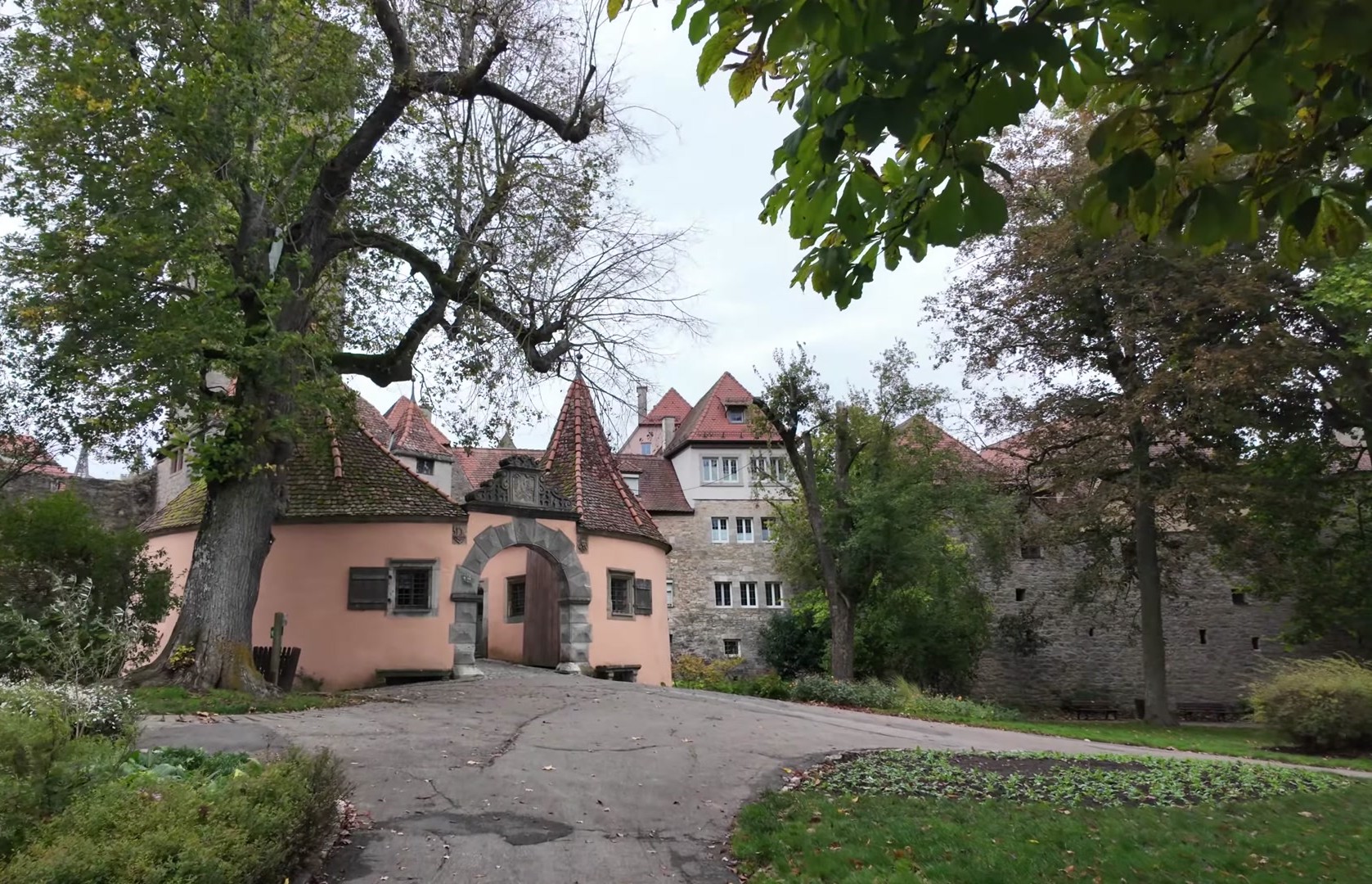
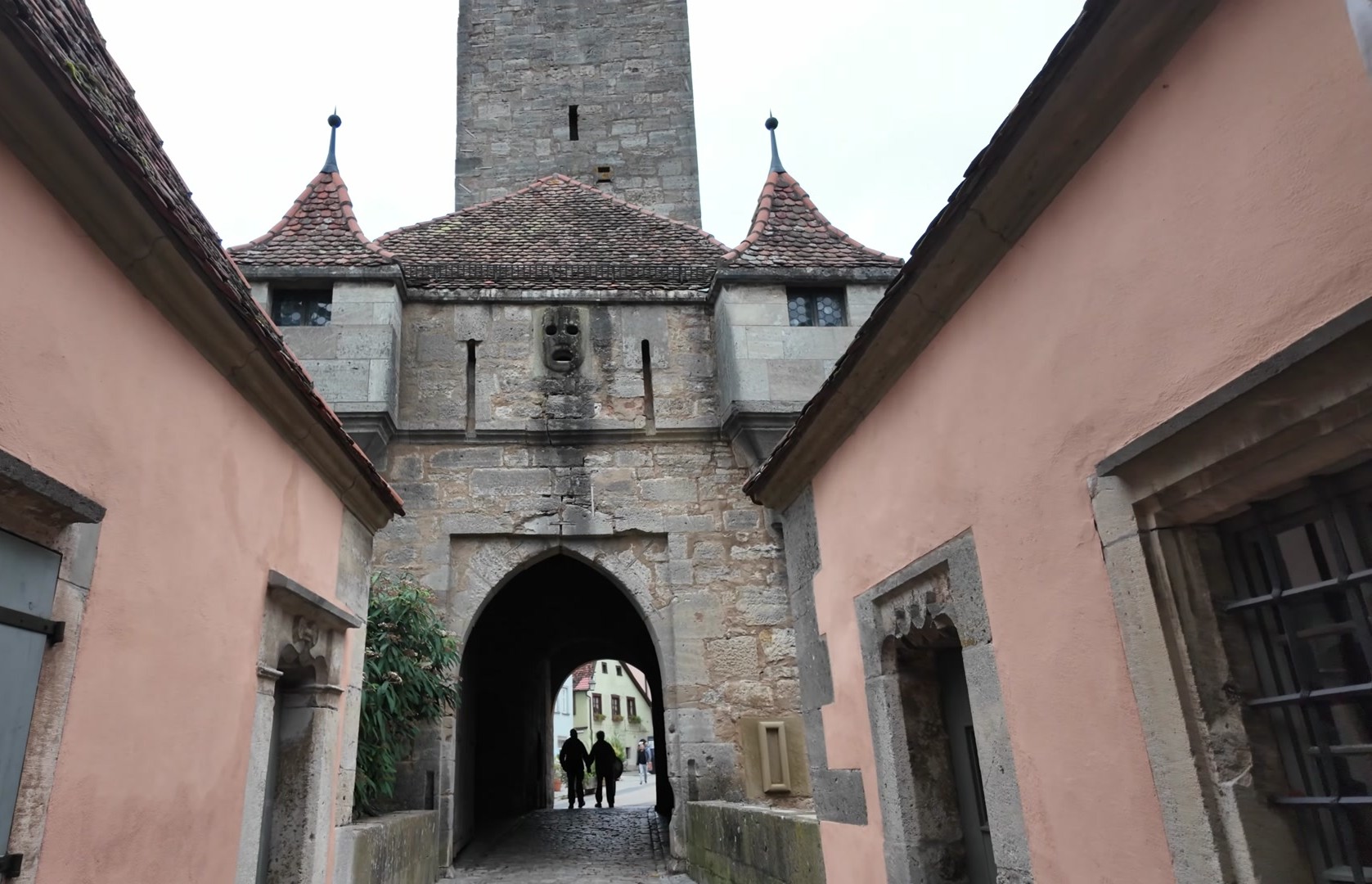


Even though the weather wasn’t perfect, I decided to try some Franconian wine. After all, the mayor became famous for his legendary 3.5-liter drinking feat. Wines from this region aren’t very well-known. While wines from the Rhine are more common, those from Franconia remain under the radar. Most tourists need to bring cash, as payment at the tower entrance isn’t possible, you pay only at the top.




If you turn left from Marktplatz toward the Town Hall, you’ll find a medieval fountain and a statue of Saint George slaying a dragon. But the real reason Rottenburg is called the "Christmas Capital" is found here: the Christmas Museum, located within a large Christmas shop. The store itself feels like a Christmas museum year-round, complete with trees, Santa Claus figures, decorations and souvenirs. Step inside and you’ll instantly feel the holiday spirit, no matter the season. Visiting this shop was definitely one of the highlights of my trip.





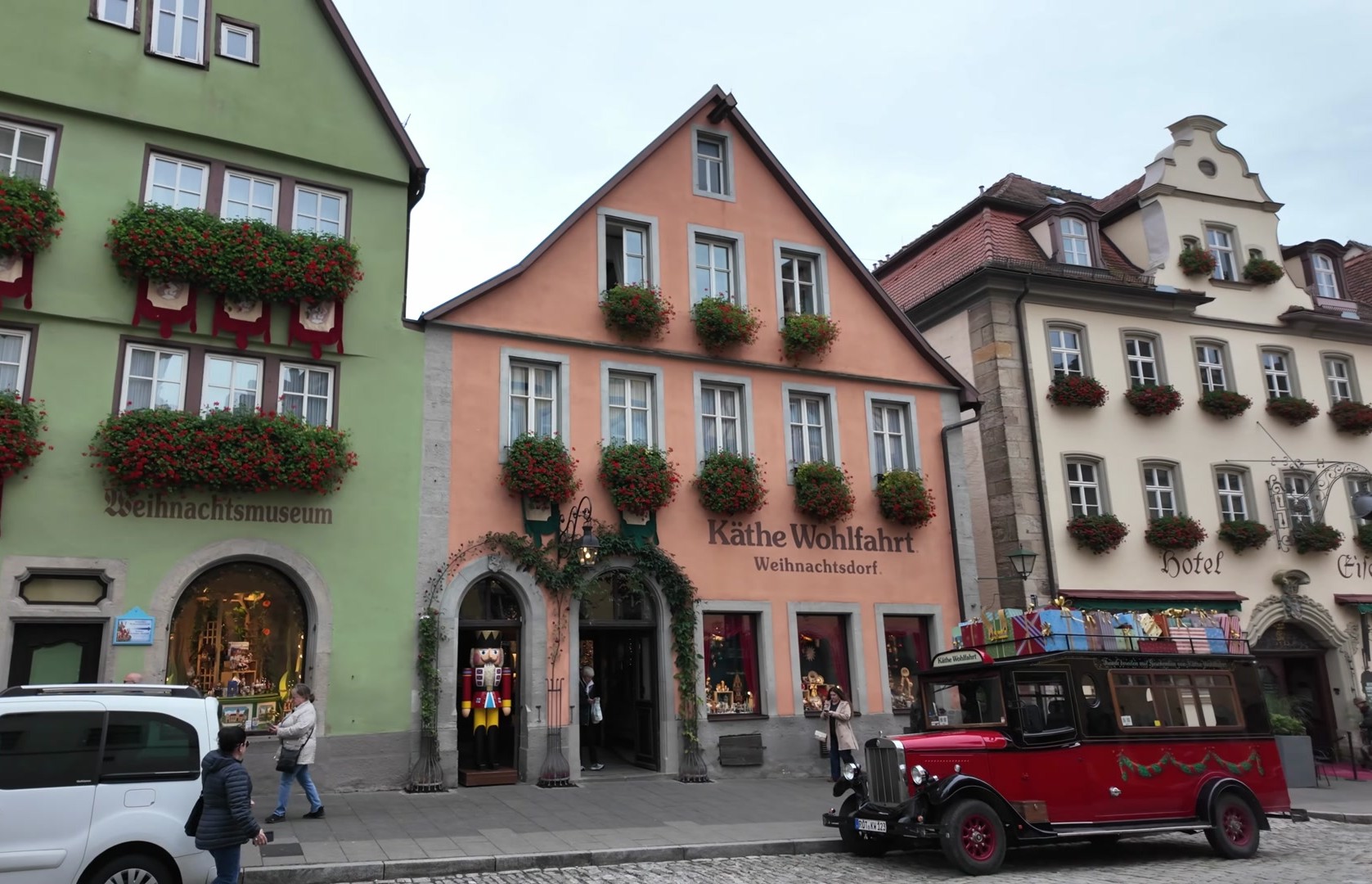
Finally I reached a small triangular plaza. The most photographed spot in Rottenburg. If you search for Rottenburg on social media, you’ll likely see this exact corner, where people pose for classic medieval-style photos.

If you ever get the chance, I highly recommend visiting Rottenburg ob der Tauber. It’s magical and the Christmas spirit is alive all year round, thanks largely to the widespread presence of Kathe Wohlfahrt Christmas shops throughout the town.
Thank you for reading and see you next time.